 Amphibious armored vehicle unit conducts open sea drill
Amphibious armored vehicle unit conducts open sea drill
 Water relay in Henan
Water relay in Henan
 Ethnic culture feasts eyes of travelers
Ethnic culture feasts eyes of travelers
 80 security dogs assembled in Nanjing police dog training base
80 security dogs assembled in Nanjing police dog training base
 Graffiti artists paint on street walls in Xinjiang
Graffiti artists paint on street walls in Xinjiang
 Story of ceramic artist Zhang Lingyun
Story of ceramic artist Zhang Lingyun
 Magic summer night dream in Hongyuan
Magic summer night dream in Hongyuan
 Incredible creatures in headwaters drainage region of Lancang River
Incredible creatures in headwaters drainage region of Lancang River
 The future of rock n' roll seen in young rockers in China
The future of rock n' roll seen in young rockers in China
 Magnificent Yanziya Cliff
Magnificent Yanziya Cliff
 |
| A Chinese team celebrates after winning third place in a newly created sport-military crossover competition in the Alabino firing range of the Moscow region on Saturday. Jia Yuchen / Xinhua |
China's tanks have advanced weapons, armor and automation systems, but their engines need to be improved, according to military officers and experts.
"The Type-96A main battle tank is the backbone of the armored units in the People's Liberation Army's ground force," said Senior Colonel Li Shengli, head of the training department at the PLA Academy of Armored Forces Engineering.
"Its weapons, fire control and sight devices and computer and automation systems can compete with any other tank of its kind used by foreign militaries."
Colonel Yu Kuilong, a researcher at the academy who specializes in vehicle engineering, said the PLA ground force has continually upgraded its armaments over recent years and its tanks are much better than before.
"Now our tanks have supreme performance in terms of maneuverability, firepower and control," he said.
The adoption of cutting-edge ergonomic technologies has substantially reduced the number of complaints about discomfort from soldiers.
"Though the engines of our tanks still need to be improved, their real combat capability must be tested by actual operations rather than a single competition," added Yu, referring to the second Tank Biathlon world championships in Alabino, Russia, that ended on Saturday.
The Chinese team won the bronze medal in the team event, behind first-place Russia and runner-up Armenia. Twelve nations took part in the competition, including Belarus, Venezuela and India.
The PLA sent four Type-96As, while other contestants used the Russian-made T-72 series tank.
The Type-96A is a third-generation main battle tank developed by China North Industries Group Corp based on its Type 88C design. It entered service in 1997, and more than 2,500 are estimated to be in service with the PLA.
Unlike predecessors such as the Type-85 and Type-88, the Type-96A features advanced imaging and jamming instruments, a more-powerful engine, improved electronics, add-on armor modules and explosive reactive armor.
Lieutenant Hou Peng, who took part in the biathlon, said the Type-96A performed well in shooting contests, hitting every target.
"However, the tanks used by the Russian team have a 1,130-horsepower engine that is 300 horsepower more powerful than ours, so their tanks run faster," he told China Central Television.
Chinese engineers are well-aware that the engine's relative lack of power poses a severe problem for the PLA's tank regiments, according to Wang Hongguang, former deputy commander of the Nanjing Military Command, who oversaw the development of the Type-96A.
"The power of the Type-96A's engine is constrained by a host of factors such as its materials, structure and several key parts," he told Global Times.
"However, considering the costs of an upgrade and the fact that it is designed to be deployed in China's central and southern regions, its current speed is fast enough."
Qin Zhen, executive editor of Ordnance Knowledge magazine, said, "In a real battle, what truly matters is a tank's protective armor, use of information, survivability and ability to detect enemies and move faster than them."
Wang added, "The public should be confident in China's tanks."
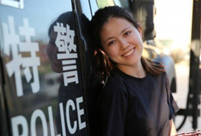 Beautiful policewoman in an anti-terrorism SWAT team
Beautiful policewoman in an anti-terrorism SWAT team Cute photos of little Taoist nuns and monks go viral online
Cute photos of little Taoist nuns and monks go viral online Amphibious armored vehicle unit conducts open sea drill
Amphibious armored vehicle unit conducts open sea drill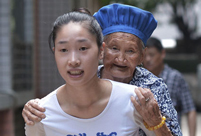 A post-90s girl who takes grandma to work
A post-90s girl who takes grandma to work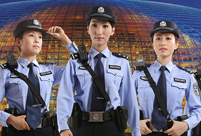 Beijing policewomen posters become a hit
Beijing policewomen posters become a hit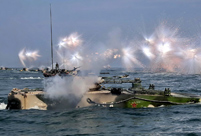 Armored regiment trains on the sea
Armored regiment trains on the sea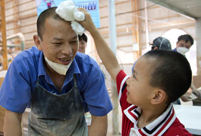 Children spend 'Father's Day' with dads at work
Children spend 'Father's Day' with dads at work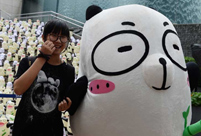 'Pan Da' appear in Shanghai World Financial Center
'Pan Da' appear in Shanghai World Financial Center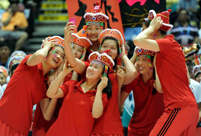 Champions take selfies on podium
Champions take selfies on podium The vanishing folk skills
The vanishing folk skills Intoxicating beauty of Dali, Yunnan province
Intoxicating beauty of Dali, Yunnan province Memorable moments of Ludian earthquake
Memorable moments of Ludian earthquake Bring world together to help elephant
Bring world together to help elephant 'Building Dreams'
'Building Dreams'  Labrang Monastery
Labrang MonasteryDay|Week|Month